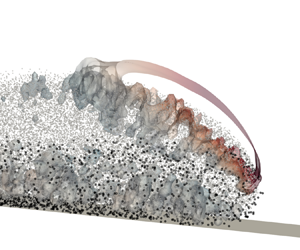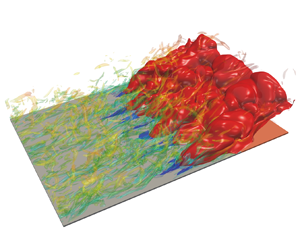Refine listing
Actions for selected content:
1418748 results in Open Access
On distributivity in higher algebra I: the universal property of bispans
- Part of
-
- Journal:
- Compositio Mathematica / Volume 159 / Issue 11 / November 2023
- Published online by Cambridge University Press:
- 18 September 2023, pp. 2326-2415
- Print publication:
- November 2023
-
- Article
-
- You have access
- Open access
- HTML
- Export citation
SUMSETS CONTAINING A TERM OF A SEQUENCE
- Part of
-
- Journal:
- Bulletin of the Australian Mathematical Society / Volume 109 / Issue 3 / June 2024
- Published online by Cambridge University Press:
- 18 September 2023, pp. 420-428
- Print publication:
- June 2024
-
- Article
- Export citation
Modeling effects of linguistic complexity on L2 processing effort: The case of eye movement in text reading
-
- Journal:
- Studies in Second Language Acquisition / Volume 46 / Issue 1 / March 2024
- Published online by Cambridge University Press:
- 18 September 2023, pp. 141-168
- Print publication:
- March 2024
-
- Article
- Export citation
Long-Run Labor Costs of Housing Booms and Busts
-
- Journal:
- Journal of Financial and Quantitative Analysis / Volume 59 / Issue 8 / December 2024
- Published online by Cambridge University Press:
- 18 September 2023, pp. 3871-3899
- Print publication:
- December 2024
-
- Article
-
- You have access
- Open access
- Export citation
Tolerance
-
- Journal:
- Victorian Literature and Culture / Volume 51 / Issue 3 / Fall 2023
- Published online by Cambridge University Press:
- 18 September 2023, pp. 523-526
-
- Article
-
- You have access
- Open access
- HTML
- Export citation
Socialism
-
- Journal:
- Victorian Literature and Culture / Volume 51 / Issue 3 / Fall 2023
- Published online by Cambridge University Press:
- 18 September 2023, pp. 505-508
-
- Article
-
- You have access
- Open access
- HTML
- Export citation
Piracy
-
- Journal:
- Victorian Literature and Culture / Volume 51 / Issue 3 / Fall 2023
- Published online by Cambridge University Press:
- 18 September 2023, pp. 479-482
-
- Article
-
- You have access
- Open access
- HTML
- Export citation
Drugs
-
- Journal:
- Victorian Literature and Culture / Volume 51 / Issue 3 / Fall 2023
- Published online by Cambridge University Press:
- 18 September 2023, pp. 391-394
-
- Article
- Export citation
Hamiltonian knottedness and lifting paths from the shape invariant
- Part of
-
- Journal:
- Compositio Mathematica / Volume 159 / Issue 11 / November 2023
- Published online by Cambridge University Press:
- 18 September 2023, pp. 2416-2457
- Print publication:
- November 2023
-
- Article
-
- You have access
- Open access
- HTML
- Export citation
VLC volume 51 issue 3 Cover and Back matter
-
- Journal:
- Victorian Literature and Culture / Volume 51 / Issue 3 / Fall 2023
- Published online by Cambridge University Press:
- 18 September 2023, p. b1
-
- Article
-
- You have access
- Export citation
On the étale cohomology of Hilbert modular varieties with torsion coefficients
- Part of
-
- Journal:
- Compositio Mathematica / Volume 159 / Issue 11 / November 2023
- Published online by Cambridge University Press:
- 18 September 2023, pp. 2279-2325
- Print publication:
- November 2023
-
- Article
-
- You have access
- Open access
- HTML
- Export citation
Lagrangian configurations and Hamiltonian maps
-
- Journal:
- Compositio Mathematica / Volume 159 / Issue 12 / December 2023
- Published online by Cambridge University Press:
- 18 September 2023, pp. 2483-2520
- Print publication:
- December 2023
-
- Article
-
- You have access
- Open access
- HTML
- Export citation
Height function localisation on trees
- Part of
-
- Journal:
- Combinatorics, Probability and Computing / Volume 33 / Issue 1 / January 2024
- Published online by Cambridge University Press:
- 18 September 2023, pp. 50-64
-
- Article
-
- You have access
- Open access
- HTML
- Export citation
Summaries of Doctoral Dissertations
-
- Journal:
- Harvard Theological Review / Volume 116 / Issue 4 / October 2023
- Published online by Cambridge University Press:
- 18 September 2023, pp. 626-631
- Print publication:
- October 2023
-
- Article
- Export citation
Grammar
-
- Journal:
- Victorian Literature and Culture / Volume 51 / Issue 3 / Fall 2023
- Published online by Cambridge University Press:
- 18 September 2023, pp. 419-422
-
- Article
- Export citation
VLC volume 51 issue 3 Cover and Front matter
-
- Journal:
- Victorian Literature and Culture / Volume 51 / Issue 3 / Fall 2023
- Published online by Cambridge University Press:
- 18 September 2023, pp. f1-f6
-
- Article
-
- You have access
- Export citation
Particle segregation within bidisperse turbidity current evolution
-
- Journal:
- Journal of Fluid Mechanics / Volume 971 / 25 September 2023
- Published online by Cambridge University Press:
- 18 September 2023, A16
-
- Article
- Export citation
Dandy
-
- Journal:
- Victorian Literature and Culture / Volume 51 / Issue 3 / Fall 2023
- Published online by Cambridge University Press:
- 18 September 2023, pp. 379-382
-
- Article
- Export citation
Study of flame–flow interactions in turbulent boundary layer premixed flame flashback over a flat plate using direct numerical simulation
-
- Journal:
- Journal of Fluid Mechanics / Volume 971 / 25 September 2023
- Published online by Cambridge University Press:
- 18 September 2023, A19
-
- Article
- Export citation










































